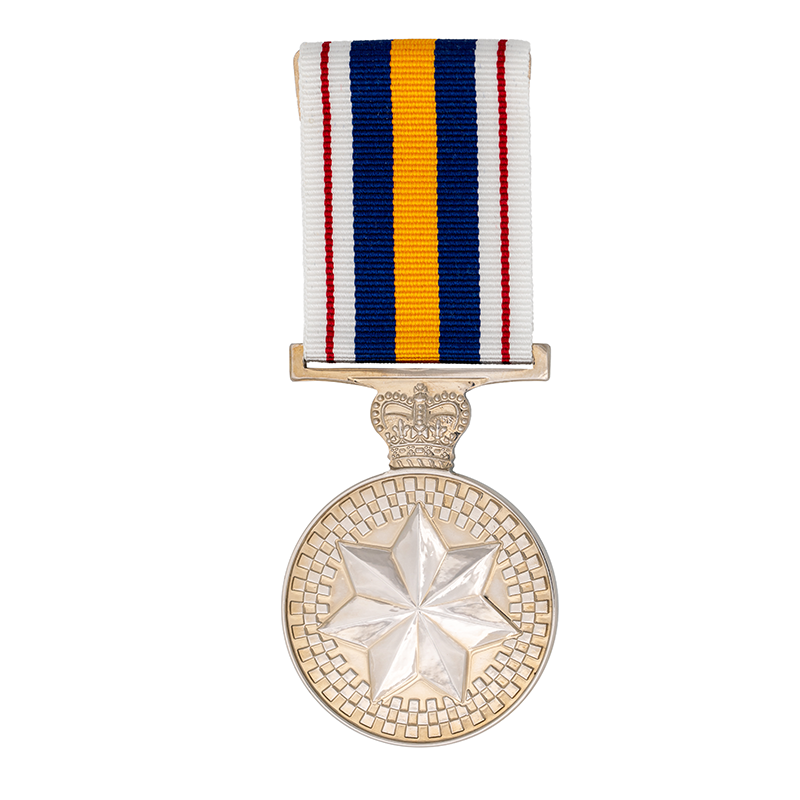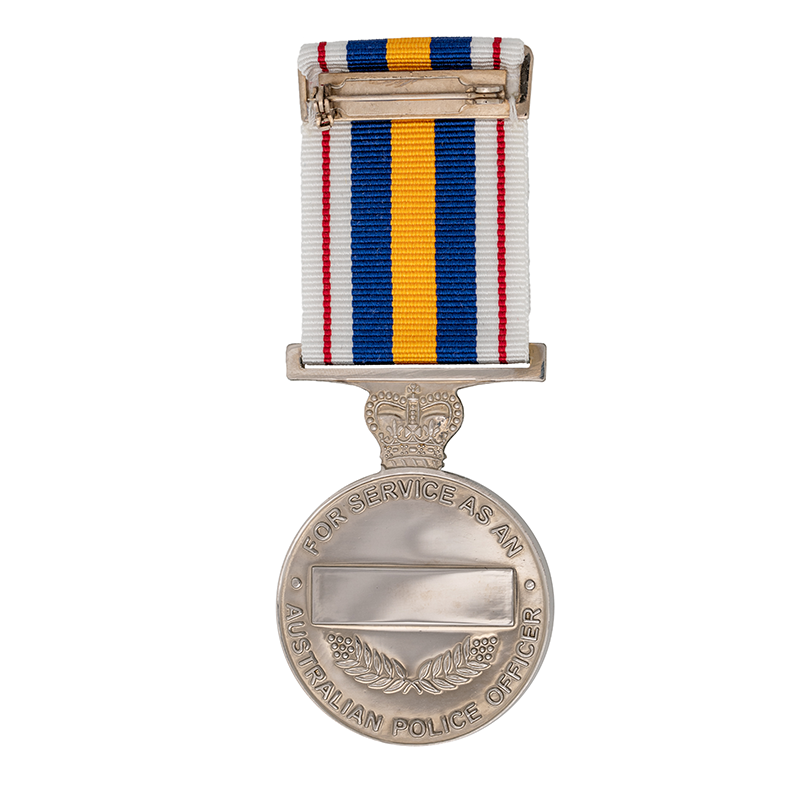

How it is awarded
The Governor-General awards the National Police Service Medal on the recommendation of the responsible Police Commissioner.
While a minimum of 15 years service is required to qualify for the National Police Service Medal, it does not represent a distinct period of service. A police officer must have been serving on or after 14 February 1975 in order to qualify for the National Police Service Medal.
The National Police Service Medal can also be awarded to persons whose ability to complete the minimum qualifying period has been removed through death, injury or disability in the course of their police service.
Inquiries about individual eligibility and applications for the medal should be addressed to the relevant Police Commissioner.
History
The National Police Service Medal was established on 9 November 2010 by Letters Patent. On 12 April 2014 the Prime Minister announced that Her Majesty The Queen had agreed to his recommendation to amend the Letters Patent to extend the eligibility for the National Police Service Medal to recognise service on or after 14 February 1975, the date on which the Australian honours system was established.
Medal design
The medal was designed by Inspector Rick Steinborn of the NSW Police Service and the ribbon by Federal Agent James Cheshire of the Australian Federal Police.
The medal is finished in cupro-nickel. The St Edward’s Crown, representing the Sovereign whom all Australian police officers ultimately serve, is located on the suspender bar. The front (obverse) of the medal features the Federation Star located inside an unbroken circular chequered band, known as ‘Sillitoe Tartan’. The Federation Star represents the national scope of the medal, while the Sillitoe Tartan is the internationally recognised symbol of policing. The unbroken band surrounds the star, signifying the unity and cooperation between each of the individual state, federal and territory police forces who together protect the entire Commonwealth. The back (reverse) of the medal has two sprays of golden wattle, the national floral symbol, located immediately below a raised horizontal panel on which the recipient’s details can be engraved. The words ‘FOR SERVICE AS AN AUSTRALIAN POLICE OFFICER’ appear in capital letters around the inside of the outer rim.
Medal ribbon
The ribbon has a central panel of three stripes of dark blue, gold and dark blue. The central panel is flanked by white panels, each bisected by a thin red stripe. Blue and gold are Australia's heraldic colours, commonly used in the ribbons of Australian medals, while the blue and white are colours traditionally associated with police and police awards. The thin red stripes represent the ever-present hazards experienced in service as an Australian police officer.
